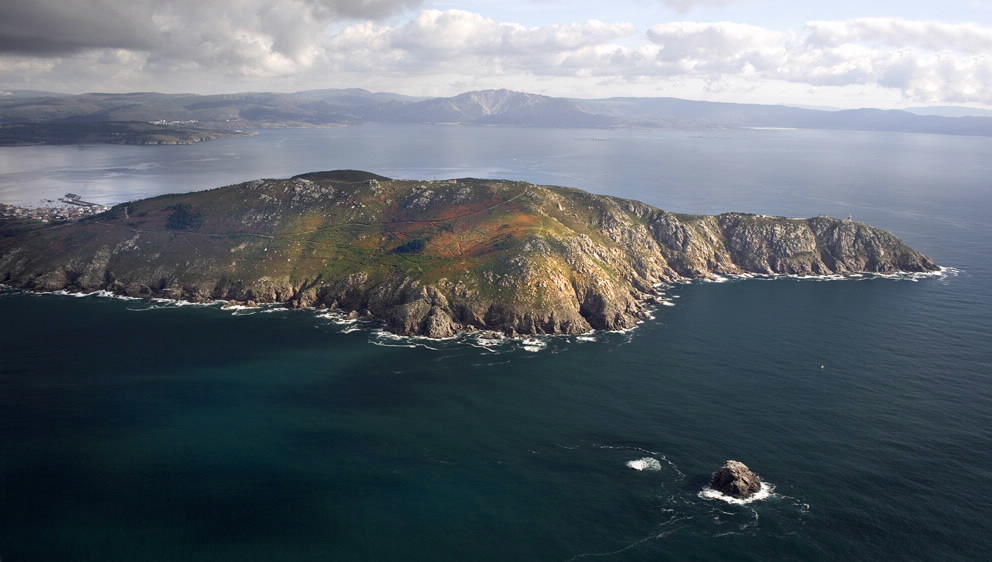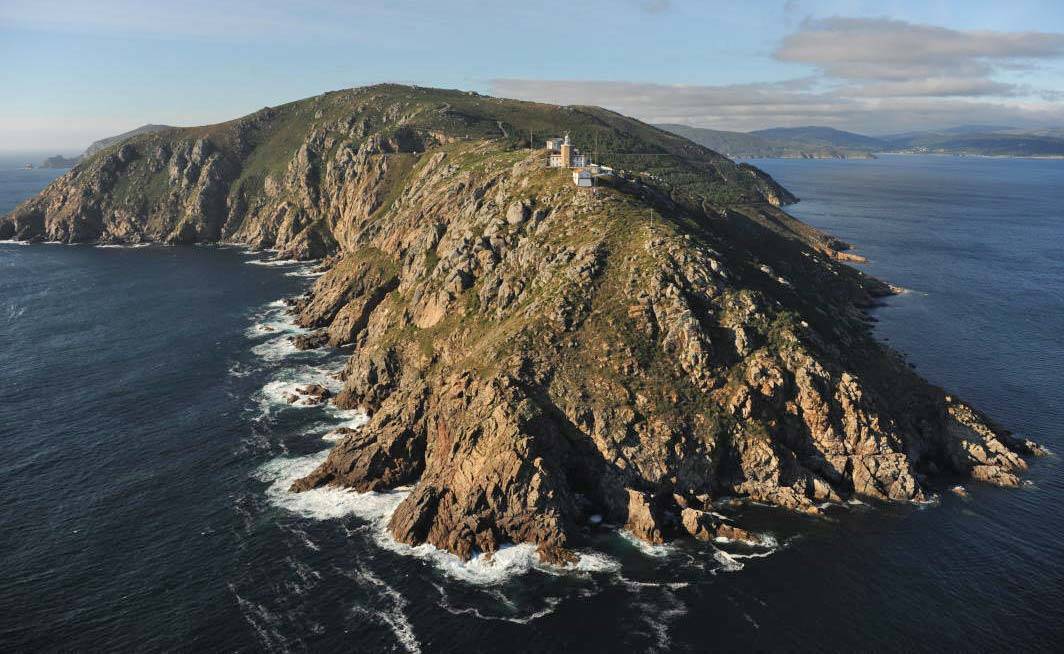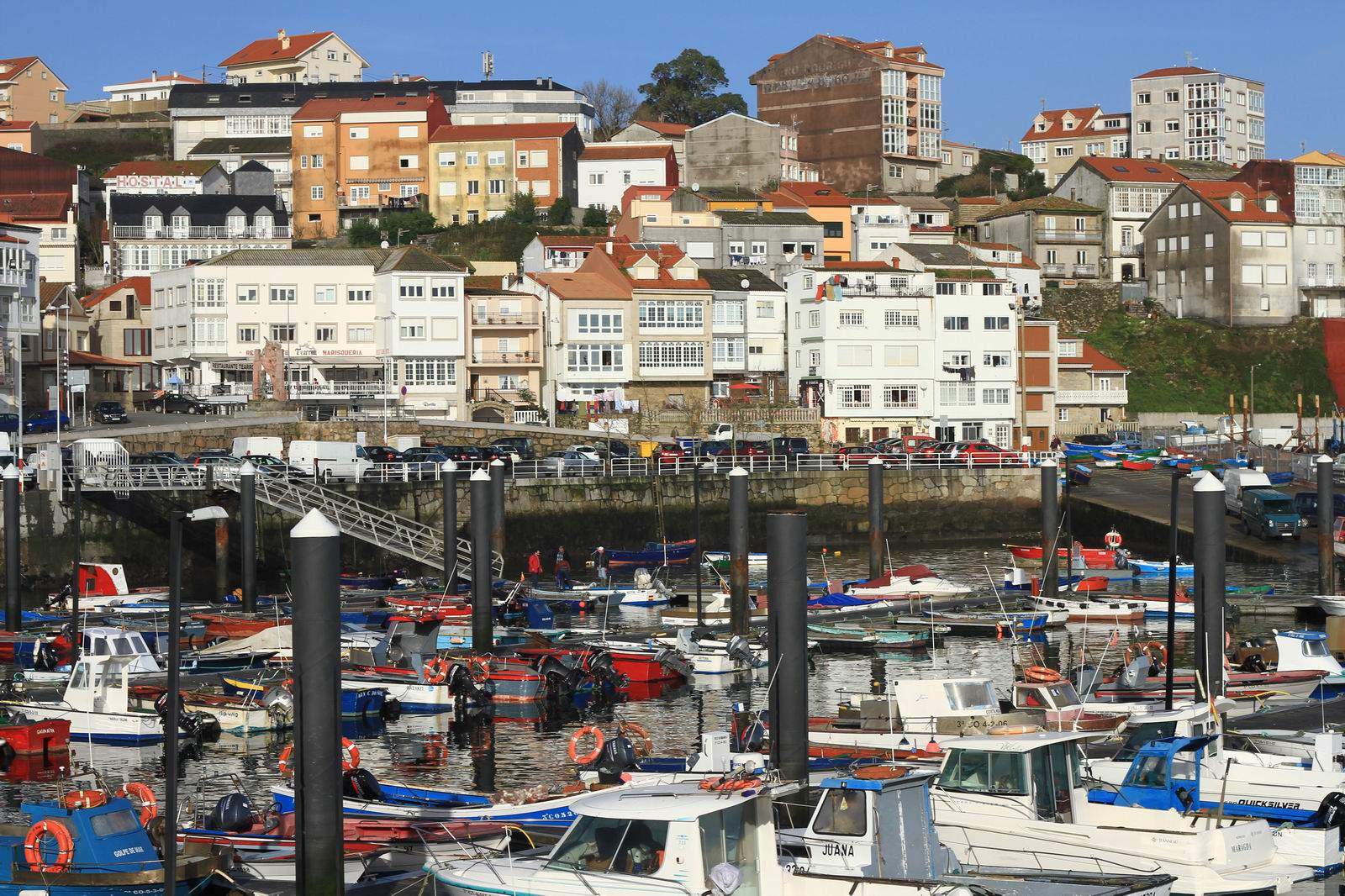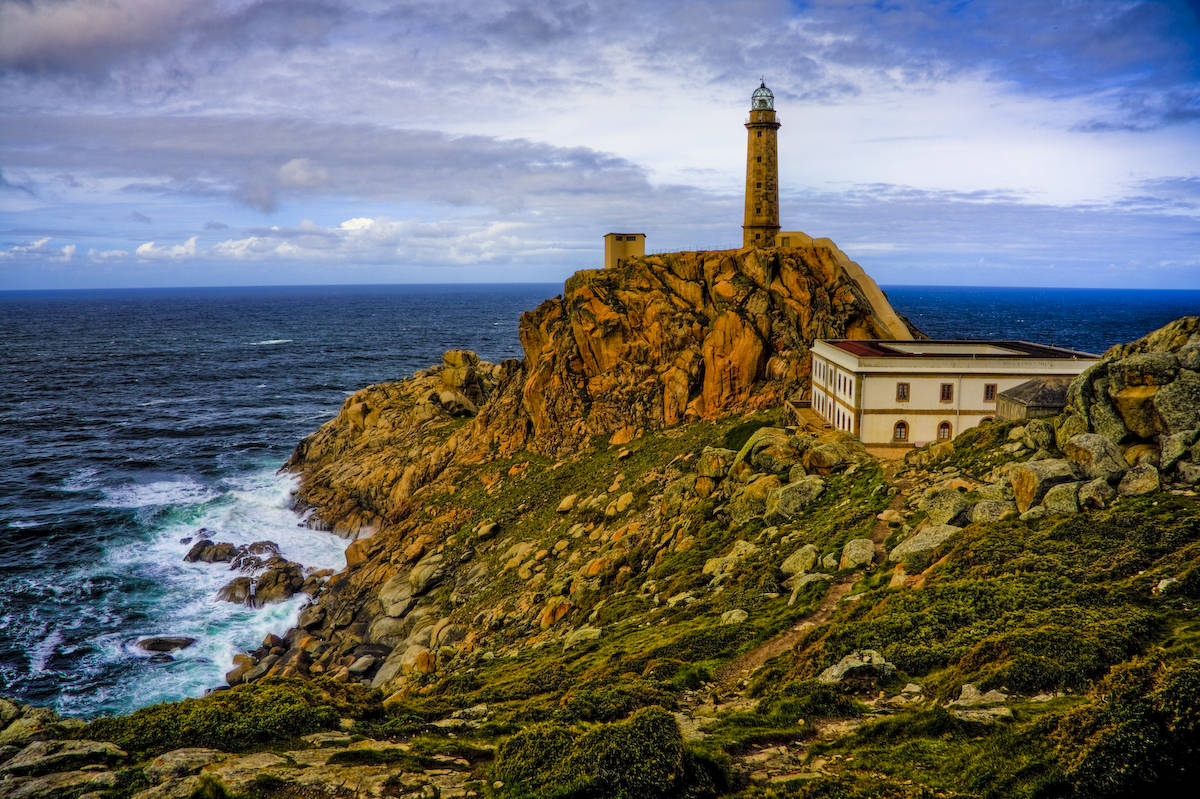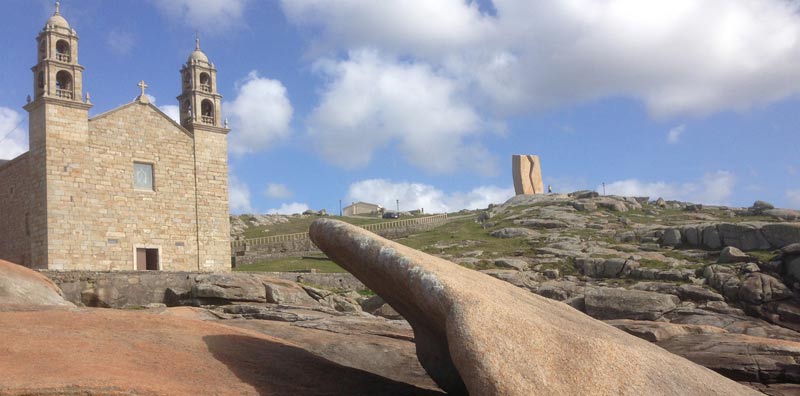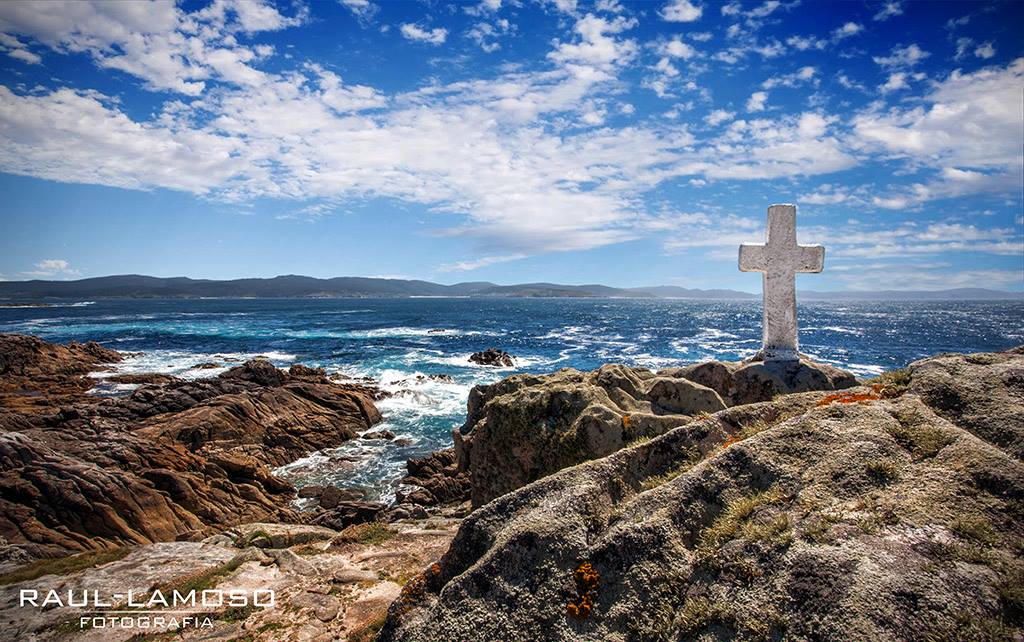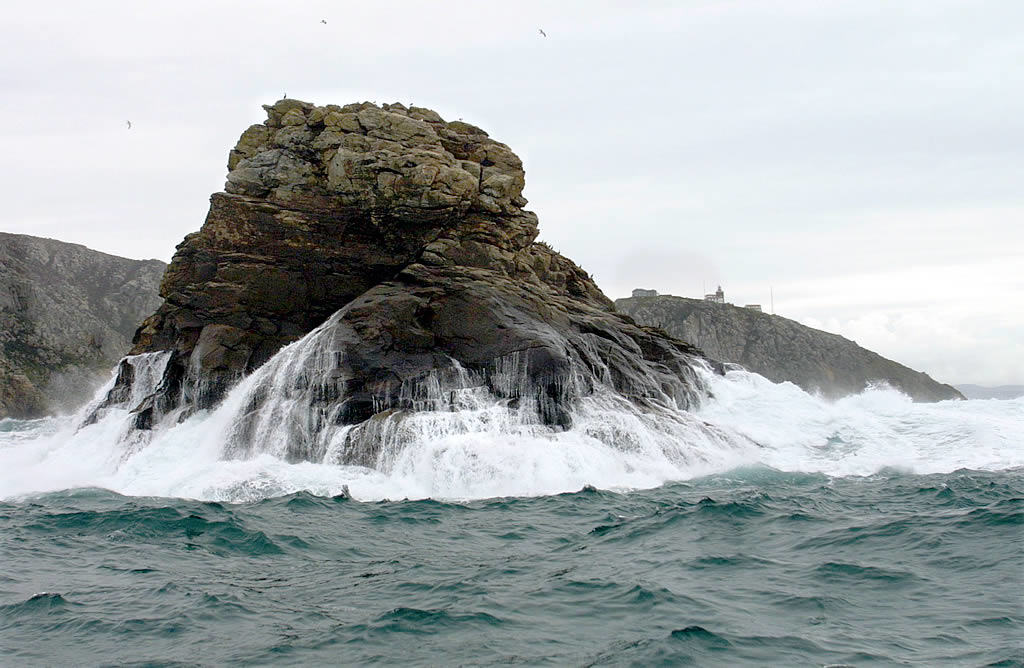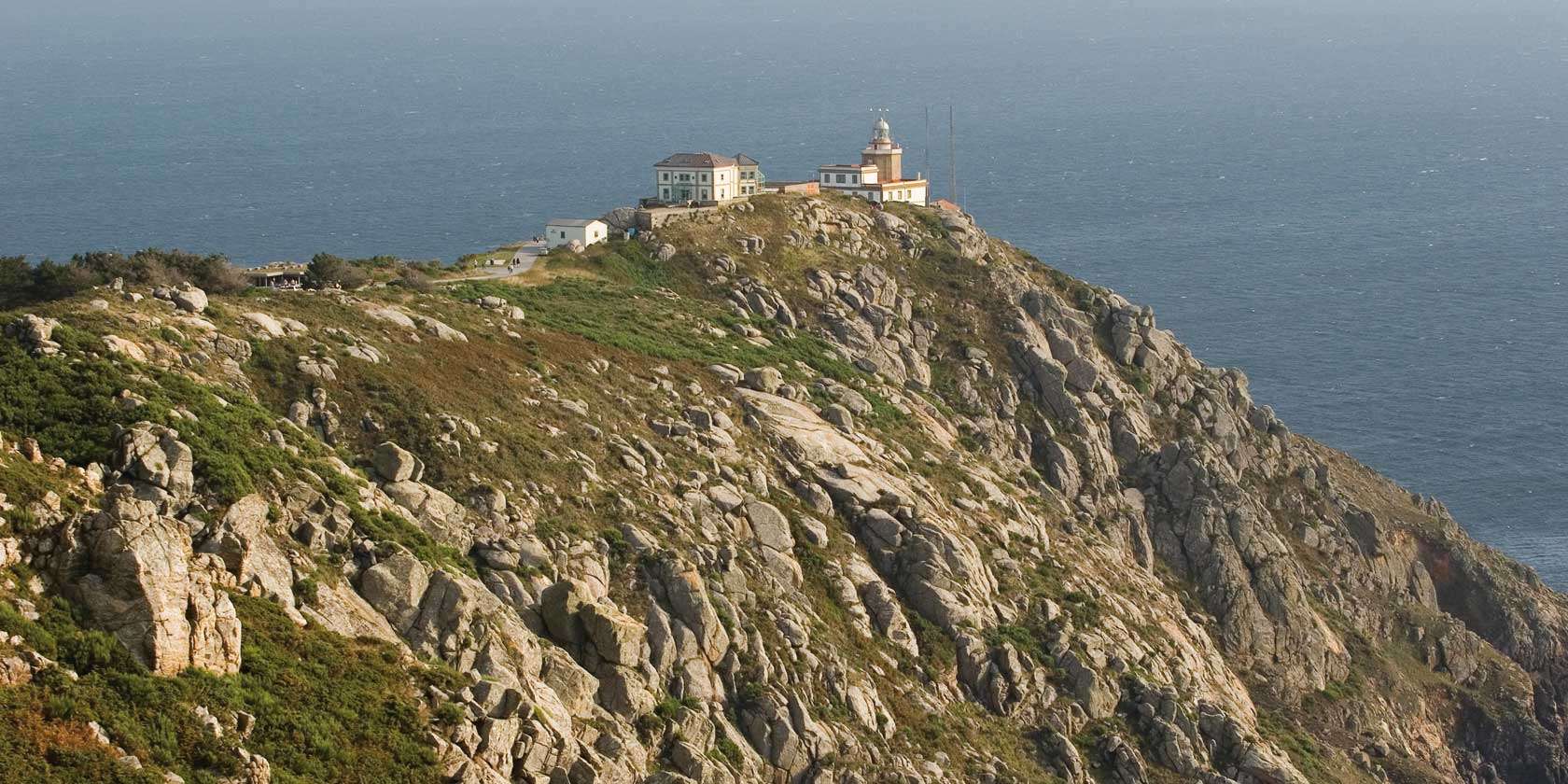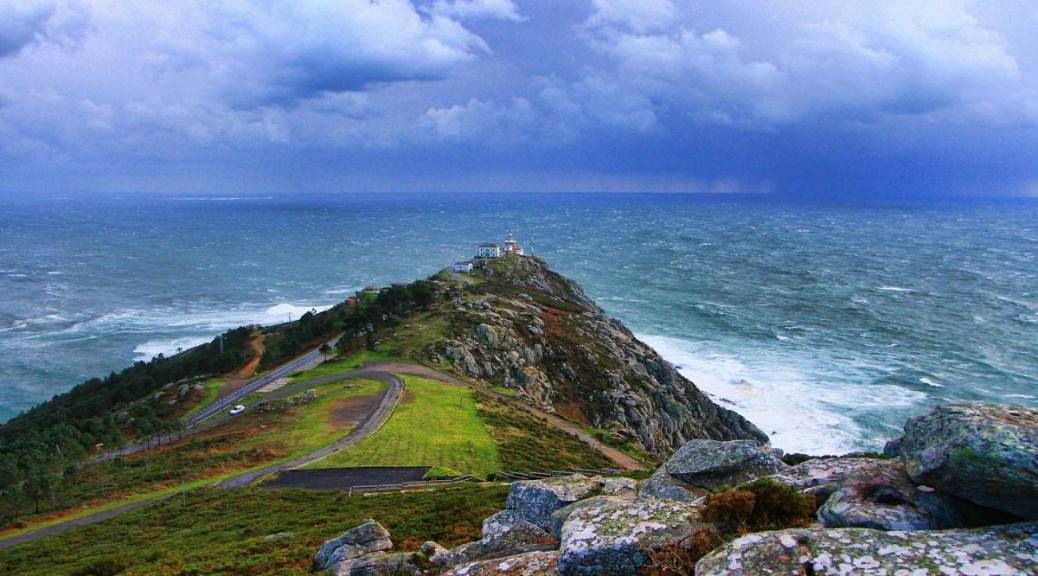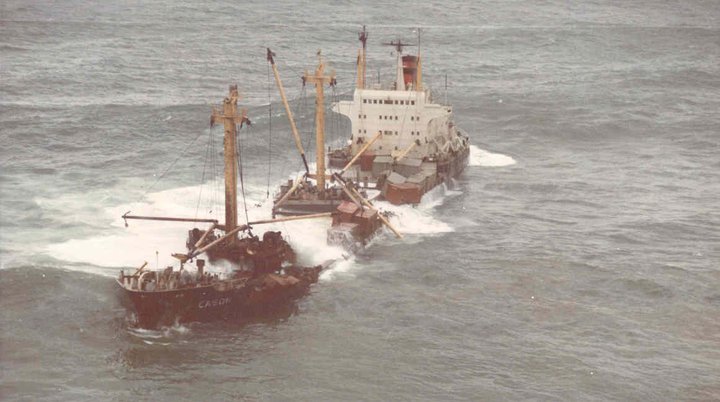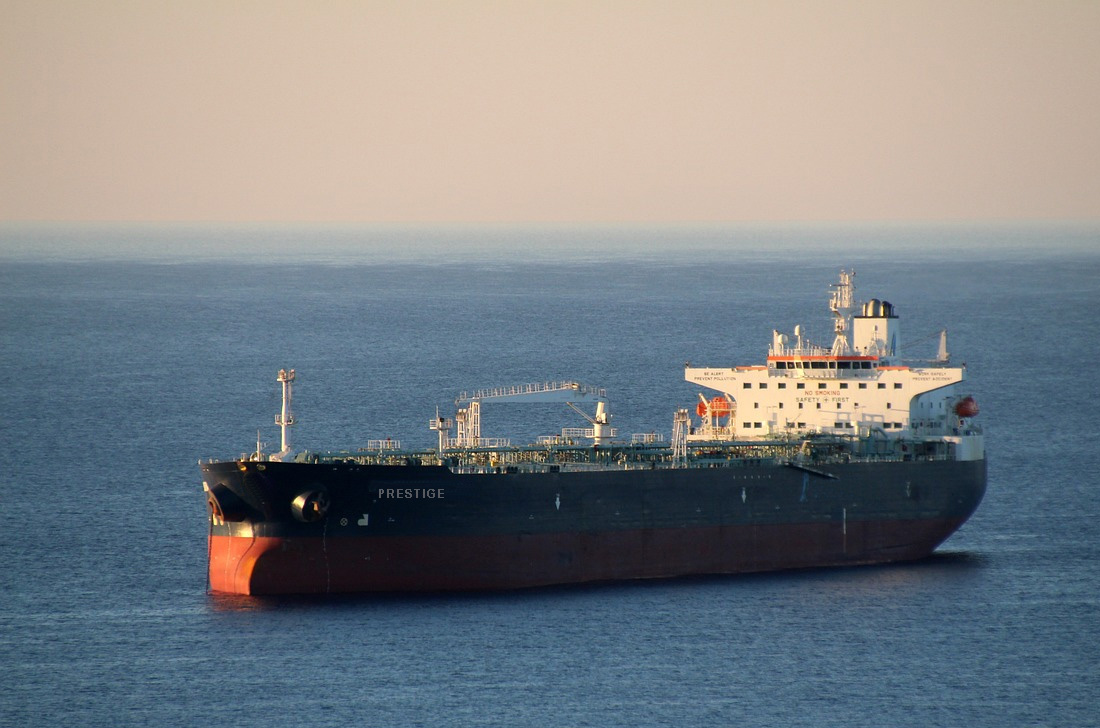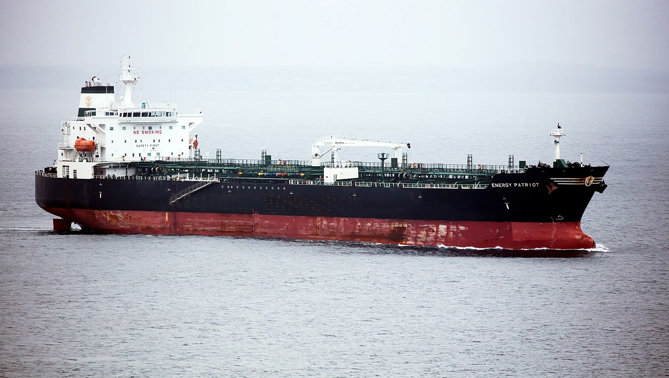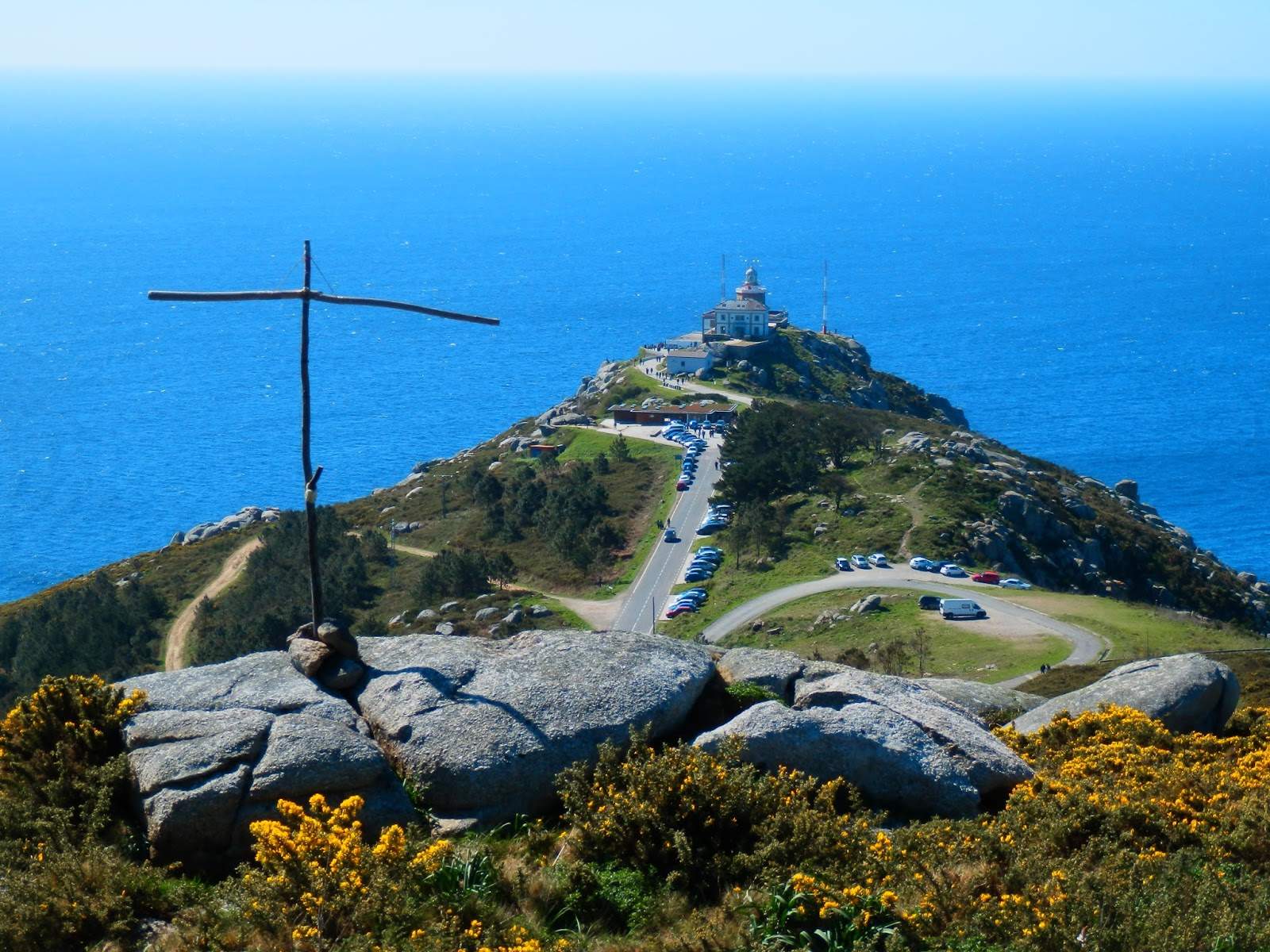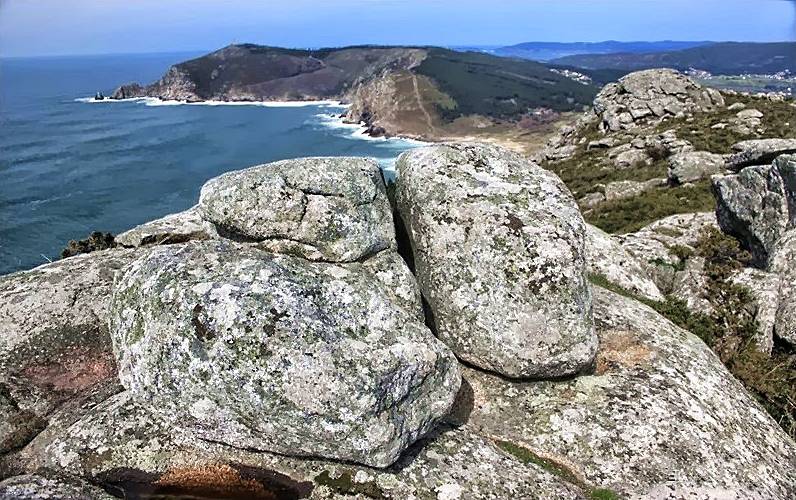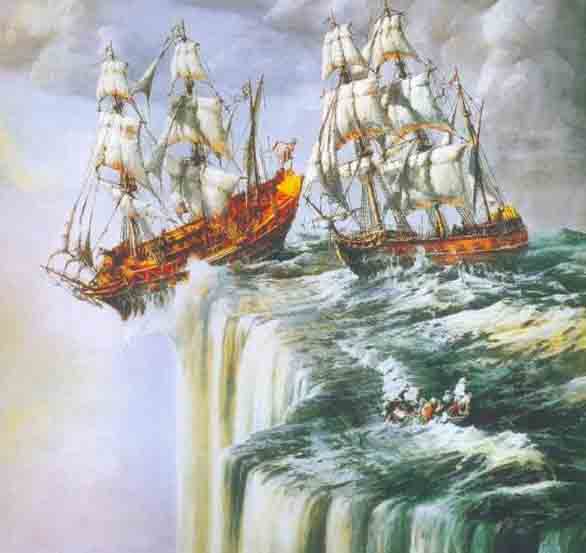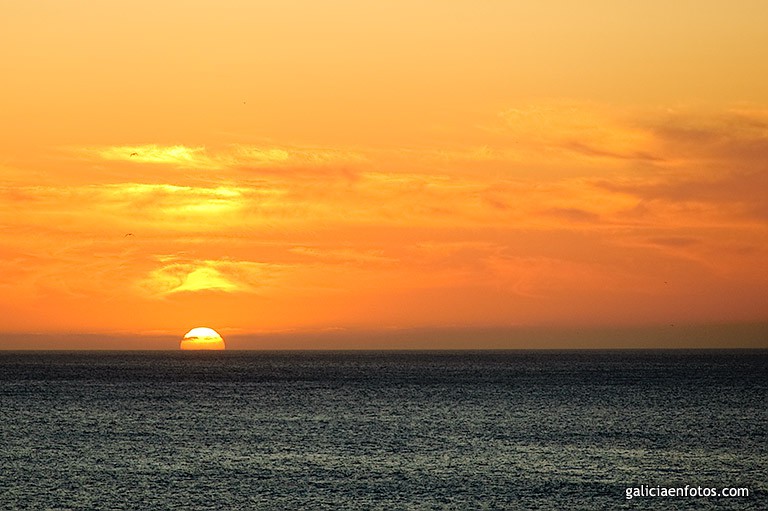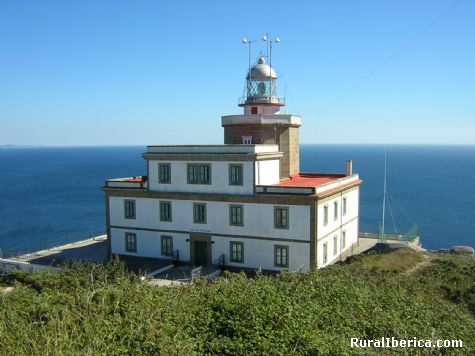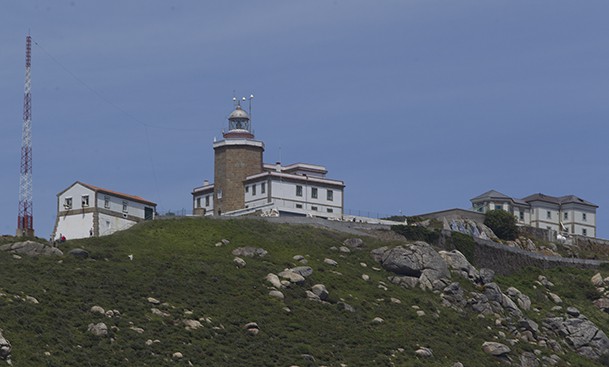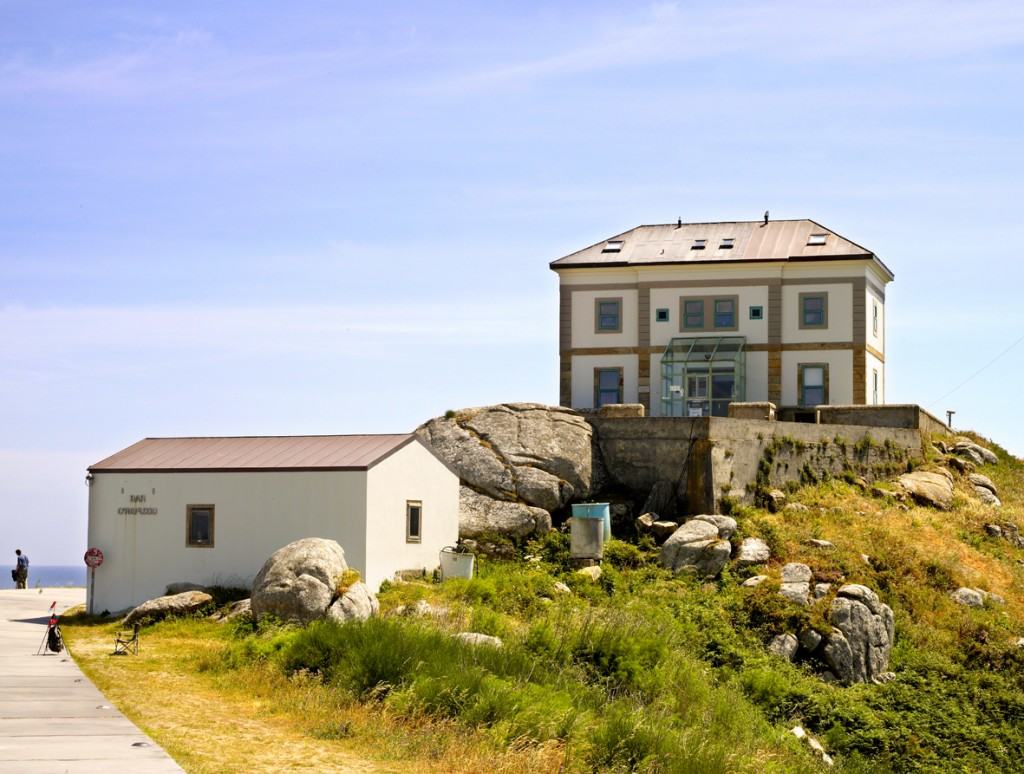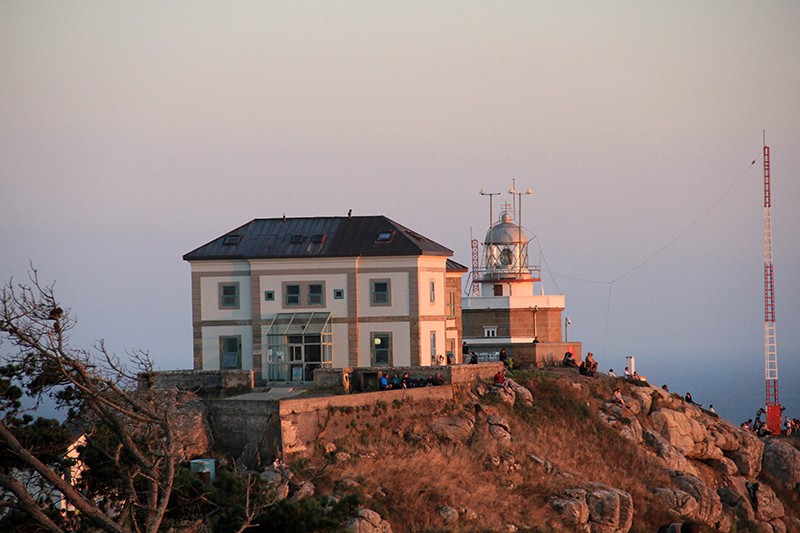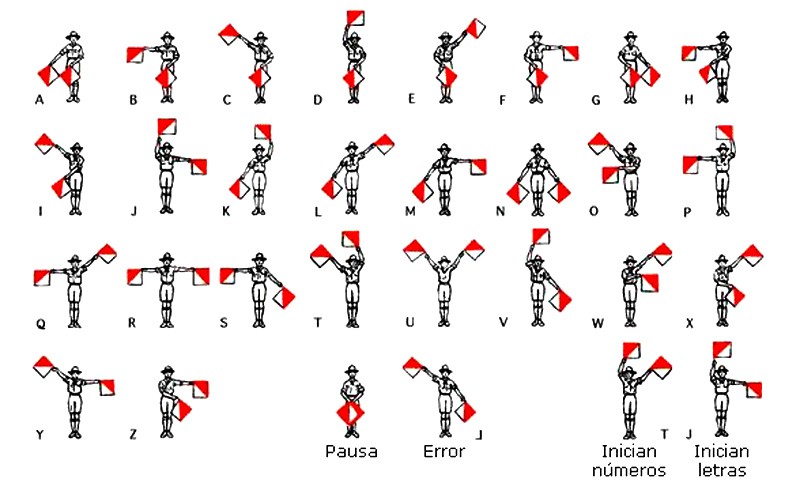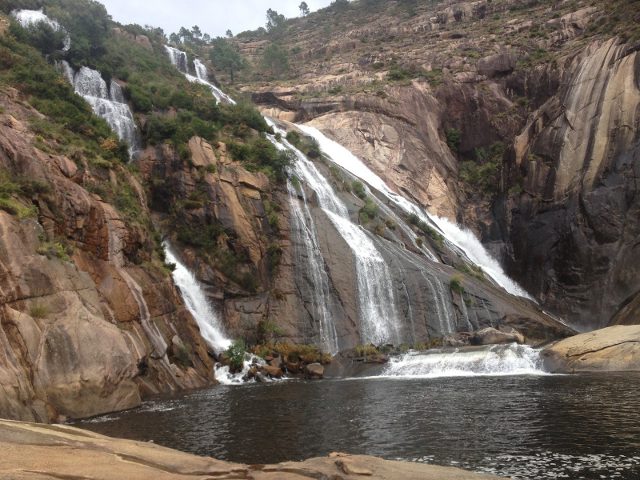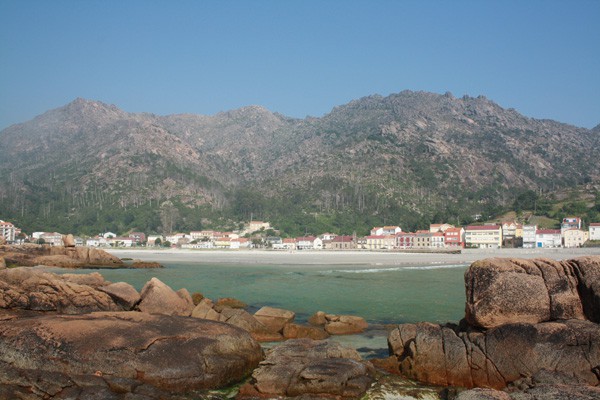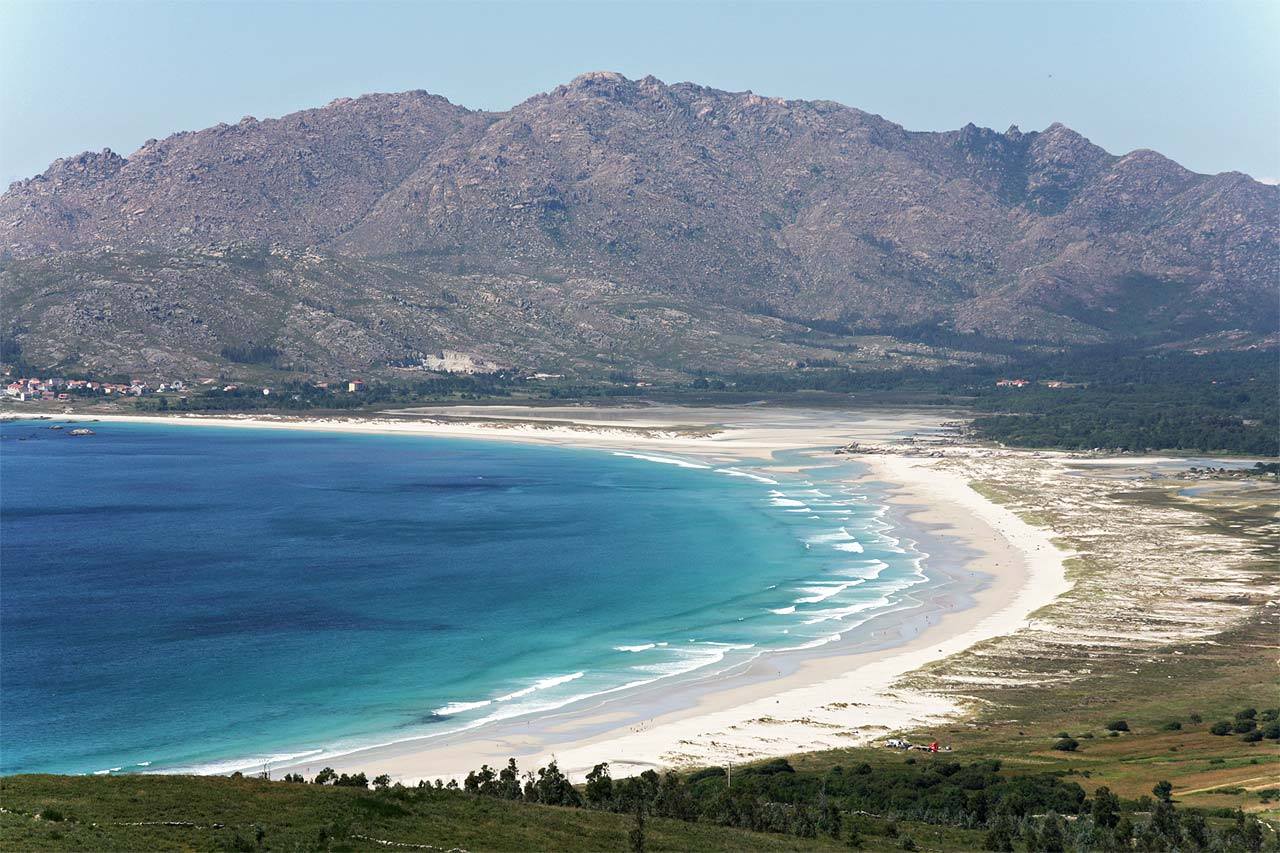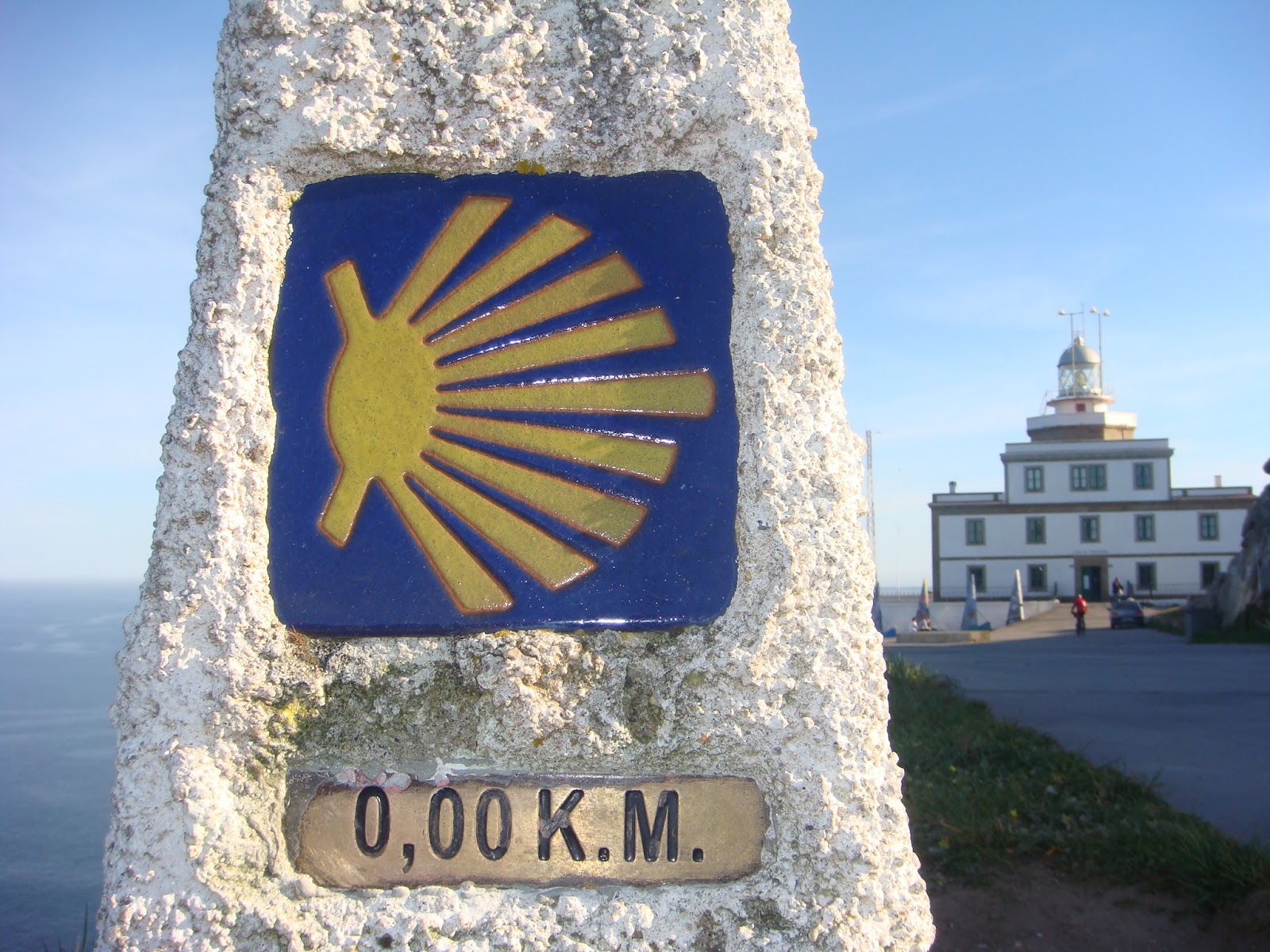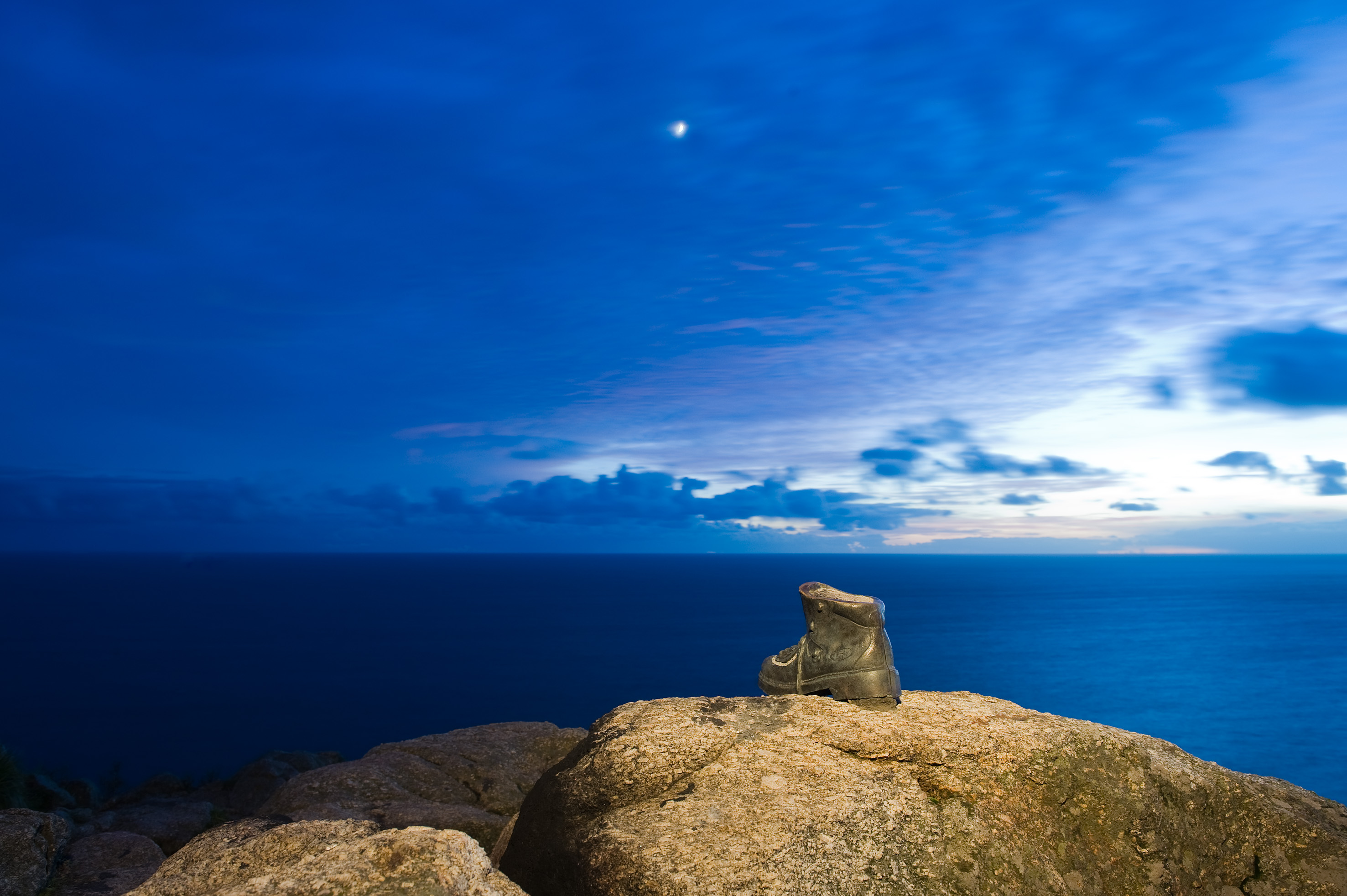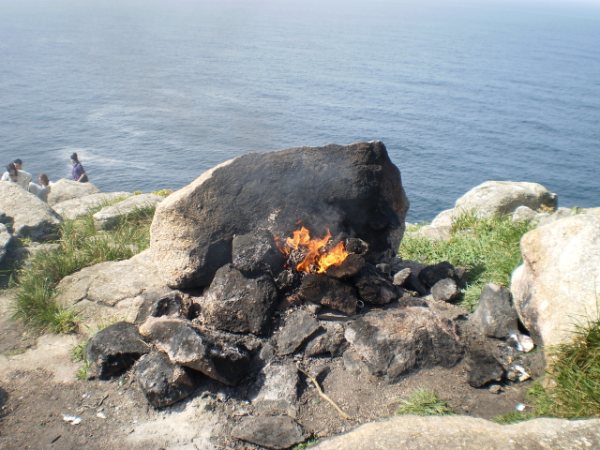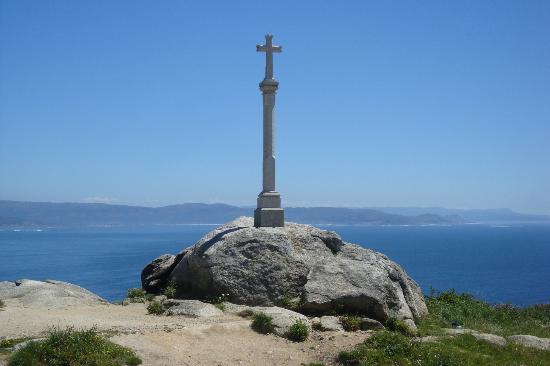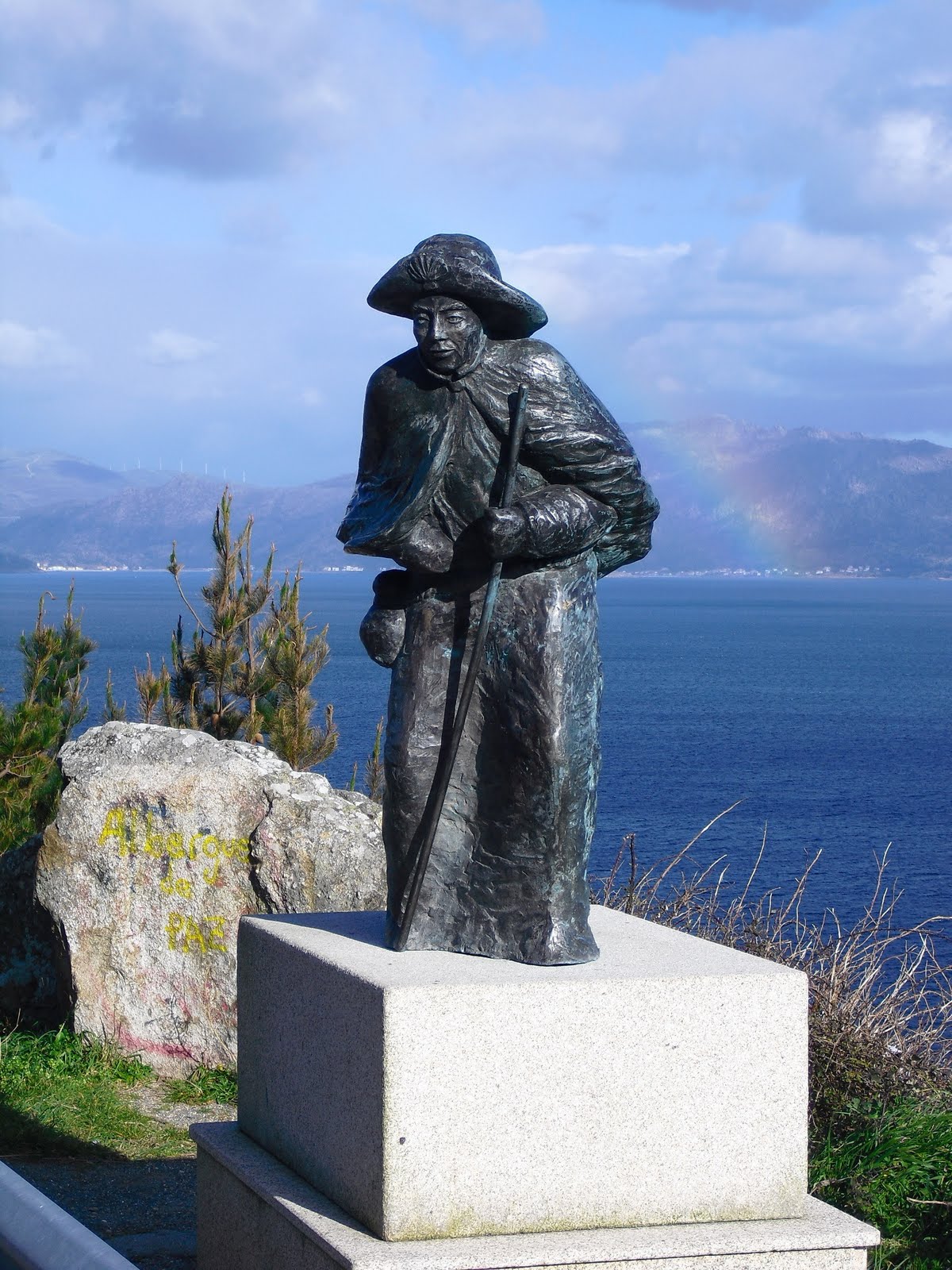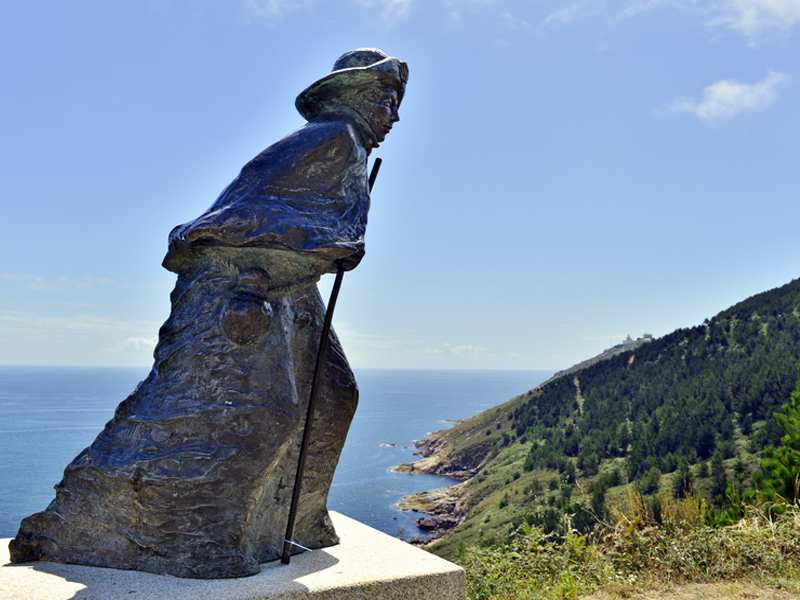Finisterre and Cape: the viewpoint to the End of the World
Until less than a thousand years ago, people believed that this place was the edge of the known world. Beyond there was nothing, just sea. If any, monstrous beasts that lived where the ocean ended and devoured anyone who dared to sail the “Mare Tenebrosum.” Fortunately these ideas disappeared completely with the passage of time, but still, today this place is surrounded by mystery, legends and beliefs that make it a place that carries a good load of mysticism. This is the Finisterre Cape: the viewpoint at the end of the world.
Finisterre Cape is a peninsula that penetrates 3 kilometers in the sea of the Coast of Death. The tip is a rising cliff from the dreaded islets of O Petonciño and O Centolo to Facho Mount (242 m) where it seems that the Ara Solis of antiquity was for the celebration of solar rites.
Its location is of singular relevance, since from here everything you see (look right, left or front) is sea. Not in vain, Finisterre (or Fisterra) is the westernmost point in Europe. That is why, since antiquity, this place was considered the end of the Earth, or finis terrae, as the Romans baptized it. Today, in a way, Finisterre Cape remains for many the end of something, the end of a path, a journey, both physical and spiritual.
The town of Finisterre, named after the Latin finis terrae, captivated from ancient times a multitude of people who longed to look out at the end of the world, where the earth ends and the sea begins, or at least so the Roman legions believed in the sinking of the Sun in its waters.
Ancient Greco-Roman geographers locate here the Promontorium Nerium and the Ara Solis, the altar of worship to the sun, built by the Phoenicians and which the Apostle James did destroy soon.
The singularity of Finisterre arises from the many legends that envelop these lands, in which religious, maritime and stone elements are intertwined. Thanks to the memory of the people of this place, these legends are still alive, captivating, along with the wonderful views that Finisterre has, anyone who comes to visit the End of the World.
Finisterre, is formed by an old nucleus grown in amphitheater on the port. Its houses and narrow streets are of a great traditionalism and originality.
In the center, is the Ara Solis Square, on the outskirts, on the way to the lighthouse, we find the most interesting monument of the town: the Church of Santa Maria de las Areas Parada obliged to contemplate the Gothic and articulated image of the Christ of the Golden beard Although the restoration made him lose his halo of mystery, his bruises and bloodlines continue to attract devotees, framed in a superb baroque altarpiece of Miguel de Romay and within the historical set of the town also stands the Castle of San Carlos.
Its port is the largest place of activity of the town and its market, Galicia’s first tourist market. The fleet consists of small inshore boats that use various fishing gear such as longline, pots, betas, etc.
At any time of the day we stroll through the port, we find sailors who go or come to fish, repairing their nets or in the fish auction market.
The fishing sector is one of the most traditional of the town.
Coast of Death
The Coast of Death, includes the municipalities of Cabana de Bergantiños, Camariñas, Carballo, Carnota, Cee, Coristanco, Corcubión, Dumbría, Fisterra, A Laracha, Laxe, Malpica de Bergantiños, Mazaricos, Muxía, Ponteceso, Vimianzo and Zas.
Here was the end of the world, the “Finis Terrae” of the Romans. Specifically, in Finisterre Cape, a fascinating place from the most remote antiquity, and where many pilgrims end their journey after passing through Santiago de Compostela.
The legendary Coast of Death owes its name to the numerous shipwrecks that have occurred here. A rugged coastal strip with immense beaches such as Carnota, O Rostro or Baldaio and also cliffs, strong currents and sudden tempests that make it so feared by sailors.
Here the sea commands. This is reminded of the Cemetery of the English, near Vilán Cape, where the Serpent sailors who were shipwrecked in 1890 were buried. And perhaps to ask for mercy to the sky, this is also a coast dotted with magical sanctuaries, such as. Virxe da Barca (Virgin of the Boat).
But sometimes, the sea enters the earth and becomes a protective river: Corcubión, Lires, Camariñas, Corme and Laxe. Villages with authentic sailor taste and many stories to tell. Like the giant hórreos (tipical granaries) of Carnota and Lira. Or the delicacy of the laces of Camariñas.
Centolo and Facho Mount
The Facho Mount with a height of 242 m of altitude, enjoys international recognition for the richness of its flora and fauna.
It is a place of legend where you can admire the unforgettable sunset and the impressive Lighthouse of Finisterre
At the top of Facho Mount, the Nerios had their altar of the sun: the Ara Solis, , former settlers of these lands, where they performed their pagan rites of worship to the star king, we also find in this Mount called Holy Stones where sterile couples They lay on these stones to reach fertility.
From Facho Mount we can also contemplate the rock of O Centolo, formerly known as Centulo (demon), where innumerable ships such as HSM Captain, Blas de Lezo, or The Bitten, among others shipwrecked. It is 700 meters from the coast and rises 25 meters above sea level. The surroundings of this rock, which mimics the shape of the shell of the crustacean to which it owes its name, are areas of hard work for seamen on the coast.
Shipwrecks
The whole coastline that forms the Coast of Death , abrupt, rocky and full of dangerous basses and cliffs, is witness to numerous shipwrecks, which claimed a multitude of human lives, this being no greater, thanks to the generosity and heroism of The people of these lands, some of whom came to endanger their lives to save those of others.
The reason for these shipwrecks is simple; Strong ocean currents, lots of cliffs, shoals, submerged rocks a few meters deep, frequent storms, sudden mists and a wind that can sometimes exceed 120 kilometers per hour.
From the year 1,345 on which the Aragonese noon of Pedro the Ceremonious was sunk to the present day, there are documented 633 sinkings in the Coast of Death. This represents 47% of the shipwrecks occurring along the entire Galician coast. Numerous stories appeared as the ones of the Raqueiros, local version of the marine pirates, that arrived to cause wrecks confusing to the ships and making them embark, obtaining prized booties.
These ships that today are shipwrecked on our shores are living examples of very specific moments of history, when in the golden age of Spain, Spain established an almost universal dominion over the seas being represented on this coast the wrecks of the Boats that crossed this route, like the 20 ships of the fleet of the Spanish navy directed by Martín de Padilla in 1596, sunk in the bosom of Finisterre right at the feet of the lighthouse.
Another time to emphasize is the Victorian, the moment in which England exerts for the first time the world hegemony. Of this time it is possible to emphasize the shipwreck due to a temporary one of the Steam British mail Great Liverpool, in February of 1846 where died 2 women and a boy or great British battleship HMS Captain, that it turned over to sink later due to a storm in 1870 In this catastrophe 482 crew members were killed in addition to their designer, British captain Cowper Phipps Coles.
In the nineteenth century with European immigration and especially Spanish, bound for America, the Great German Transatlantic Salier wrecked and disappeared without a trace in these coasts with more than 400 people on board, one night of December 1846.
Another remarkable shipwreck is the corvette Bayonnaise One of the most famous ships that France has ever had in its navy, in full Napoleonic Wars, was sunk in the beach of Langosteira of Finisterre in 1803. The ship covered the route of Havana to Ferrol when he was chased by the English ship HMS Arden. The Bayonnaise was stranded by his own crew who abandoned him, having set him on fire. The ship exploded at midnight.
Although the wreck that deserves a special mention for the proximity in time and the damage caused in our coasts is the Prestige. On 13 November 2002, the Prestige monocoque tanker, crashed in a storm while it was carrying 77 000 tonnes of fuel oil off the Coast of Death, and after several days of maneuvering away from the Galician coast, About 250 km from it. The discharge of the cargo caused one of the largest environmental catastrophes in the history of shipping, both in terms of the quantity of pollutants released and the extent of the affected area.
The episode had a special incidence in Galicia, where it also caused a political crisis and an important controversy in the public opinion.
With the wrecks that happened on this Coast of Death, we could write the history of humanity simply through the sunken material remains found thanks to this great maritime traffic and commercial route, one of the most important in history.
Legends on the Coast of Death
“The Coast of Death” is usually known as a place where intrepid sailors, deep and ancient traditions and full of superstitions and legends (transmitted from parents to children in the long winter nights, when the storms prevent the boats from leaving To fish) and in which Death is the protagonist.
But why is death usually the main subject of these legends?
There are several theories, the most generalized being due to the force of the sea in these coasts, which strikes forcefully against the abrupt coasts full of cliffs, and has no mercy or ships or men, making the bottom of the sea a blue cemetery for Hundreds of sailors. The truth is that in addition to the most widespread is the most realistic, as there are numerous deaths and sinkings in these coasts each year, and you have this nickname won by heart.
Another legend says that being the End of the World, there was the border with Death. The end of the world, referred to the belief of antiquity, that the land was flat and Finisterre was considered the most western end of the European continent, that is, the point of Europe closest to the end of the world.
Other explanations that give it its name speak of the Way of the Stars, today the Road to Santiago, which ended in Finisterrae and where ancient Celtic walkers came from all over Europe to the place where the sun died every day to be reborn a new life of Light, There the name of “coast of the death”.
Finisterre has also been associated with Ara Solis. Tradition tells that the Romans found in the place an altar to the sun (Ara Solis) built there by the Phoenicians and that the Apostle Santiago would order to destroy soon after. The memory of this altar still lasts in the fisterran´s legends and for that reason it takes the name of the square more typical of the old town.
It is also said that the chalice and the host of the Galicia shield, representing the Holy Grail, comes from a Christianization of the pagan altar, in which the chalice would symbolize the horizon of the sea, and the host, the sun in its sunset.
Mount Facho is also a place of legends. In Duio there have been numerous archaeological remains that indicate that Dugium, the great city of the ancient Celtic settlers of these lands, the Nerios. And here, at the top of Mount Facho, they had their altar of the sun: he Ara Solis, where they performed their pagan rites of worship to the star king.
It is also said that it was the retirement of a barbarian woman named Orcavella, who after a long life dedicated to magical arts, robberies, eating children and chasing people, chose this place to end their days. He dug a tomb and, next to the body of a shepherd, whom he had charmed, he buried himself. At the shouts of the shepherd came the people who could not do anything, because of the snakes that came out of the sarcophagus.
Also in this Mount Facho are the Holy Stones. The Holy Stones are two large, almost round stones, which are credited with certain gifts, such as that of fertility. Legend has it that the Virgin Mary and her Son Jesus, on their trip to Finisterre, after leaving the stone boat at Muxia, sat down to rest on these stones, giving them the gift that despite their weight anyone With one hand he could move them. On the other hand it is also said that on these stones the Virgin appeared to some shepherds.
Finisterre Lighthouse
Built in 1853, at 138 meters above sea level, it protects one of the most dangerous coasts in the world.
It is known by all the seafarers of the world, because of its importance as a means of warning of the proximity of a coast extremely dangerous (its light reaches to reach 65 km of length), as well as for the reputation of treacherous of this maritime zone.
It is the most western and emblematic lighthouse in Europe, traditionally considered the end of the world, “Finis Terrae”.
This point advances on the sea, about 5 km in a southerly direction, parallel to the granite Mount Pindo forming the protected and beautiful estuary of Corcubión.
For thousands of years it was thought that every night the sun went down in its waters, and beyond that point there was only a region of darkness and monsters.
This building, forms part of an interesting set of fume architecture. It is the work of the engineer Felix Uhagón, and has category of lighthouse of first order.
The tower, made of stonework, is of octagonal base and ends in a cornice on which the balcony is supported. On top is the vault with a polygonal lantern, 138 meters above sea level.
Originally operated with oil lamp, after various reforms were electrified with incandescent lamps, emitting a flash every five seconds with a common time reach of 31 nautical miles (57 km).
The building next to the lighthouse is the foghorn, popularly known as the Cow of Fisterra (Finisterre). Work of Ángel García del Hoyo, it began operating in the year 1889 for the days in which the fog prevented to see the light of the lighthouse. It emits two strident sounds every minute, with a range of 25 miles (46 km) in average time.
There are authors who identify this location with the old promontory nerio, others place in this place the Ara Solis, which worshiped the Sun. There is near this place a series of stones linked to religious legends: holy stones, The dirty stones of wine, the stone chair, the tomb of Orcavella, etc.
According to classical historian Lucio Floro, Tenth June Brutus, in 137 BC, he came to this promontory and did not want to leave without first looking at how the sun dipped in the sea, chirping like a red-hot iron when it enters the water.
This sunset is considered today one of the best natural spectacles that can be seen on the Coast of Death. Everyone who visits it, comes to contemplate that magical moment of how the sun dies in the sea.
Finisterre´s Semáforo
On the Coast of Death, next to the lighthouse of Finisterre, is the Finisterre´s Semáforo which rises to 143 meters above sea level, higher than the lighthouse itself whose height is 138 meters. Only with these data can we say that the views and the imposing sunsets will be the maximum enjoyment of its visitors.
This building forms part of the architectural complex of the place, together with the lighthouse and the Cow of Fisterra (Finisterre). It dates from the year 1879, and its original mission, due to its imposing location by the Atlantic Ocean, was to issue signals for the navy, hence its name, since the Semaphore is a system of communication by means of flags, In which the position of the arms is used to represent each letter of the alphabet included in the International Maritime Organization (IMO) international signal code.
After its role as communication system, it spent a short space of time being a weather station. Nowadays, this building, which has been totally renovated twice by the prestigious architect César Portela, is a Delicatessen Hotel, a delicate, exquisite, flirty hotel where you can please all five senses, a great showcase for lovers of Galicia, Chosen by the pilgrims of the Road to Santiago who need and want to rest in the ends of the earth.
Pindo Mount and Ézaro
Pindo Mount is a Mountous appendage where rounded granitic rocks abound and end at the edge of the sea. At the top, from its viewpoint of A Moa, at 627 meters of altitude, we can visualize the wide and steep coastal panorama that extends to its feet (Fisterra, Corcubión, Cee, the beach of Carnota, tip of Caldebarcos).
This Mount is considered as a mythical place around which have been developing numerous legends about its ancient settlers, the Celts, and the magical properties of the area. It has been called Celtic Olympus, because it is a sacred Mount for the Celts, who made their sacrifices on the stone.
Without leaving the area we can not miss visiting Ézaro. It is the only parish in the municipality bordering the sea, the Atlantic Ocean. Although what characterizes and what is more known this parish, it is by its waterfall, “Fervenza do Ézaro” where the Xallas river impregnates and determines all the character of the Town Hall of Dumbría. It crosses it from north to south, until it reaches its maximum expression, in the form of a waterfall, directly on the Atlantic Ocean.
The waterfall of the river Ézaro is full of legendary stories; Flames of princesses, supernatural powers, enchantments, rites, etc. In addition it is the only river of Europe that ends in this way on the sea.
Before becoming a waterfall, the river is retained by three reservoirs; The one of Fervenza, Castrelo and Santa Uxía. These places are recommended for their scenic beauty, as well as for its abundant native flora and fauna. Especially noteworthy are the so-called Pías or Caldeiras, which are natural cavities built over the centuries by the river, bathed by transparent turquoise waters. In the last section the river we find a difference of 155 meters, and the height of the waterfall is 40 meters.
It is a spectacle that can be enjoyed both night and day, and is that the waterfall looks beautiful on a clear night and in the light of the moon, reflecting this in the water that falls from above.
Going up to the Viewing-point of Ézaro we can enjoy exceptional views of the sea, the town of Ézaro and Finisterre Cape
Symbols at the End of the World
Next to the Lighthouse of Finisterre, at the very end of the Road to Santiago, we find a myriad of symbols that pay tribute among others, to the pilgrims who finish it.
The most curious, original and most striking to the visitor, are the bronze boots, originally were two, but someone started and took one.
We will also find the landmark KM 0, this is one of the three most photographed landmark of the Road to Santiago, along with the entrance to Galicia by the French Way (shortly before reaching O Cebreiro) and kilometer 100, In A Brea, also in the French Way. In the photo, the pilgrims are placed behind the cairn, and thus immortalize their arrival to the mythical Finis Terrae of Celts and Romans.
Another symbol with more claim for the pilgrims, is the cross that is literally in the “end of the earth”, next to the lighthouse of Finisterre. Its location indicates that it has fulfilled the dream of every pilgrim who makes the Road to Santiago, to do it until the end arriving at the end of the “End of the world.”
On the cross, the pilgrims are usually disposed of part of their belongings, as a promise. It is quite curious to be able to see the different objects they leave there, and how happy they are, being able to contemplate the sea with such wonderful views.
A well-known custom is to burn the shoes they have worn along the way, alongside the cross, for release and rest, although this is not allowed to be done for fear of a fire.
End of the road
The “end of the earth” condition is also an incentive to undertake the Road to Santiago, because every traveler wants to always reach beyond, until the end of the road.
Already the Roman historian Lucius Florus tells how the legionaries of Rome contemplated with sacred fear the sunset on the ocean, when they reached the Finis Terrae, in century II A.C. The Finis Terrae, Finisterre or Fisterra, as it is called in Galicia, has since become a must for anyone who already made the Jacobean Route.
If the route from Santiago to Finisterre is made by the coast, the traveler will find in Noia a small Compostela. It was precisely a French archbishop, Berenguel de Landoire, who, badly received by the santiagueses, established his habitual residence there, building churches and palaces. At the mouth of the estuary the village of the village of Muros is grouped, and then the coast is open towards Finisterre. A coast with wide sandy beaches open to the ocean and high mountains behind. The most impressive for its tall and mysterious rocks of pink granite is Pindo Mountain, the Celtic Olympus of the Galicians. And finally, the town of Finisterre, around its square of Ara Solis, nostalgic memory of the altar raised by the Romans to worship the sunset.
The road that leads to the end of the cape starts next to the Romanesque church of Santa Maria das Areas, where the image of the Holy Christ of Golden Beard is preserved. In the highest part of the mountain, there was a hermitage and carved stones that gave the place a sacred character.
Now a lighthouse guides the incessant parade of ships by one of the places of more intense maritime traffic of the world. Today we are no longer at the end of the earth, but at the end of the Road to Santiago. Just go back. Return happy and satisfied. Having made Road to Santiago is a decoration that can always be proudly displayed. If you have reached Finisterre, with more reason.






